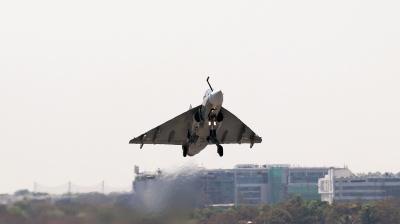Sun's core rotates four times faster than its surface: study
The rotation of the solar core may give a clue to how the Sun formed.
The Sun's core rotates nearly four times faster than its surface, according to a "surprise" finding that may reveal what the solar body was like when it formed.
Scientists had assumed the core was rotating like a merry-go-round at about the same speed as the surface.
"The most likely explanation is that this core rotation is left over from the period when the Sun formed, some 4.6 billion years ago," said Roger Ulrich, a professor at University of California, Los Angeles (UCLA) in the US.
"It is a surprise, and exciting to think we might have uncovered a relic of what the Sun was like when it first formed," said Ulrich, co-author of the study published in the journal Astronomy and Astrophysics.
The rotation of the solar core may give a clue to how the Sun formed. After the Sun formed, the solar wind likely slowed the rotation of the outer part of the Sun, he said.
The rotation might also impact sunspots, which also rotate. Sunspots can be enormous; a single sunspot can even be larger than the Earth.
The researchers studied surface acoustic waves in the Sun's atmosphere, some of which penetrate to its core, where they interact with gravity waves that have a sloshing motion similar to how water would move in a half-filled tanker truck driving on a curvy mountain road.
From those observations, researchers detected the sloshing motions of the solar core, Ulrich said.
By carefully measuring the acoustic waves, the researchers precisely determined the time it takes an acoustic wave to travel from the surface to the centre of the
Sun and back again.
That travel time turns out to be influenced slightly by the sloshing motion of the gravity waves, Ulrich said.
The researchers identified the sloshing motion and made the calculations using 16 years of observations from an instrument called GOLF (Global Oscillations at Low Frequency) on the spacecraft SoHO (Solar and Heliospheric Observatory) - a joint project of the European Space Agency and NASA.
The idea that the solar core could be rotating more rapidly than the surface has been considered for more than 20 years, but has never before been measured, researchers said.


















